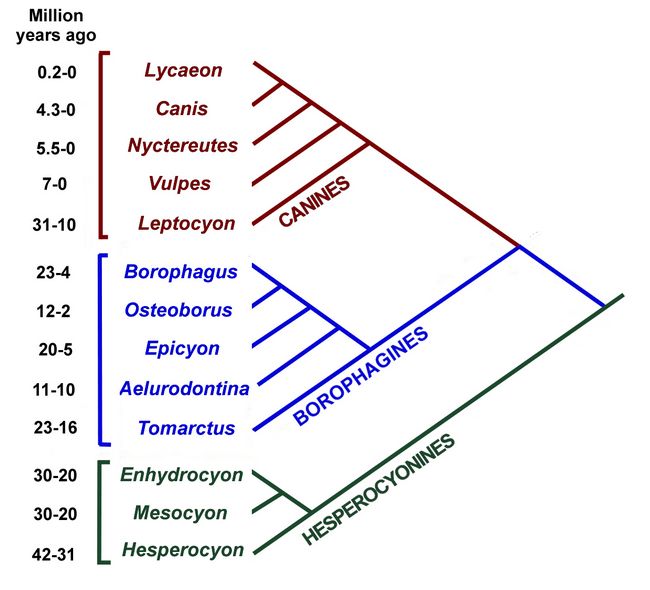Athena Review Image Archive ™
Canidae ancestral relations

Cladogram showing ancestral groups of Canidae (after Tedford 2008)
Canidae is the term for the dog family, from Latin canis, “dog”. This cladogram by Tedford (2008) shows the three major groupings of canid ancestors from 42 mya onwards, including the extinct Hesperocyonines and Borophagines. The Hesperocyonines (42-20 mya), the earliest known canids, split off from the ancestors of felids by about 42 mya, during the Eocene period, and flourished through the subsequent Oligocene period. They were of variable sizes, ranging from racoon size to massive carnivores nearly ten feet long.
Evolving by the Early Miocene period from the Hesperocyonines and lasting until the end of the Pliocene, the Borophagines (23-2 mya) spread around the world. Many were coyote-sized. Their type genus, Borophagus, was a highly successful carnivore that persisted for 20 million years.
Shown at the top are Caninae genera who evolved from the earlier groupings. The Canine family includes the extinct but highly successful Leptocyon (31-10 mya), and the extant Vulpes (foxes), Nyctereutes (Racoon Dogs), Canis (wolves, dogs, coyotes, and jackals), and Lycaeon (African Hunting Dog).
References
Wang, X. and R.H. Tedford. 2008 Dogs: Their Evolution. Columbia University Press.
Copyright © 1996-2020 Rust Family Foundation (All Rights Reserved).